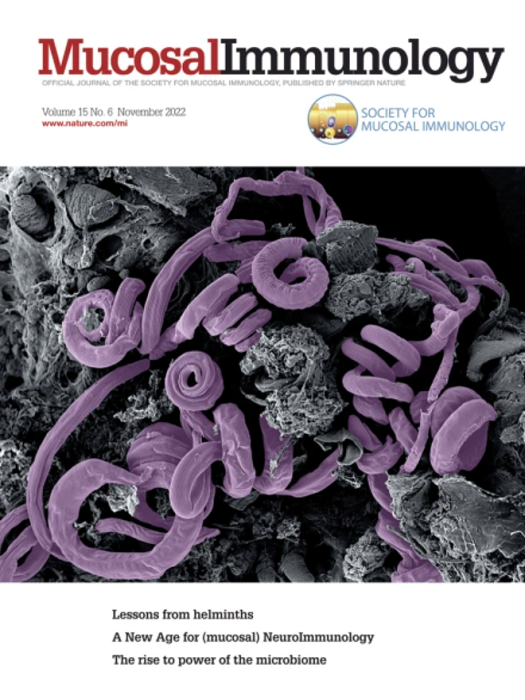Type-I interferons in Vulvovaginal Candidiasis: Mechanism of epithelial early defense and immune regulation against Candida albicans
IF 7.6
2区 医学
Q1 IMMUNOLOGY
引用次数: 0
Abstract
Vulvovaginal candidiasis (VVC) is a mucosal infection predominantly caused by Candida albicans, affecting over three-quarters of immunocompetent women worldwide. While the female genital tract mucosa is the primary defense against the fungus, the specific immune mechanisms involved in this host-pathogen interaction remain largely unknown. In this study, we explored the relevance of type-I interferons (IFNs-I) pathway using both in vitro and in vivo models of VVC. Our quantitative proteomic analysis revealed that C. albicans induces the activation of the IFNs-I pathway in human epithelial cells (ECs) of the female genital tract shortly after exposure to the fungus. Additionally, we identified β-glucans as a crucial fungal component involved in triggering this pathway. Using a VVC model in IFN-α/β receptor-deficient (Ifnar1-/-) mice, we demonstrated that IFNs-I regulate the fungal burden, C. albicans epithelial invasion, polymorphonuclear neutrophils (PMNs) recruitment, inflammatory tissue response, local cytokine balance, and the composition of T cell subsets in the draining lymph nodes. These findings underscore the pivotal role of the IFNs-I pathway in ECs-mediated responses against C. albicans, especially in the early stages of VVC development, offering insights into potential therapeutic targets for this condition.
i型干扰素在外阴阴道念珠菌病中的作用:上皮早期防御机制和对白色念珠菌的免疫调节。
外阴阴道念珠菌病(VVC)是一种主要由白色念珠菌引起的粘膜感染,影响全世界超过四分之三的免疫功能正常的妇女。虽然女性生殖道粘膜是对真菌的主要防御,但涉及这种宿主-病原体相互作用的特定免疫机制在很大程度上仍然未知。在这项研究中,我们通过体外和体内VVC模型探讨了i型干扰素(IFNs-I)途径的相关性。我们的定量蛋白质组学分析显示,白色念珠菌在暴露于真菌后不久诱导女性生殖道人上皮细胞(ECs)中IFNs-I通路的激活。此外,我们发现β-葡聚糖是触发这一途径的关键真菌成分。利用IFN-α/β受体缺陷(Ifnar1-/-)小鼠的VVC模型,我们证明IFN- i调节真菌负荷、白色假丝酵母上皮侵袭、多形核中性粒细胞(PMNs)募集、炎症组织反应、局部细胞因子平衡和引流淋巴结T细胞亚群的组成。这些发现强调了ifn - i通路在ecs介导的针对白色念珠菌的反应中的关键作用,特别是在VVC发展的早期阶段,为这种疾病的潜在治疗靶点提供了见解。
本文章由计算机程序翻译,如有差异,请以英文原文为准。
求助全文
约1分钟内获得全文
求助全文
来源期刊

Mucosal Immunology
医学-免疫学
CiteScore
16.60
自引率
3.80%
发文量
100
审稿时长
12 days
期刊介绍:
Mucosal Immunology, the official publication of the Society of Mucosal Immunology (SMI), serves as a forum for both basic and clinical scientists to discuss immunity and inflammation involving mucosal tissues. It covers gastrointestinal, pulmonary, nasopharyngeal, oral, ocular, and genitourinary immunology through original research articles, scholarly reviews, commentaries, editorials, and letters. The journal gives equal consideration to basic, translational, and clinical studies and also serves as a primary communication channel for the SMI governing board and its members, featuring society news, meeting announcements, policy discussions, and job/training opportunities advertisements.
 求助内容:
求助内容: 应助结果提醒方式:
应助结果提醒方式:


